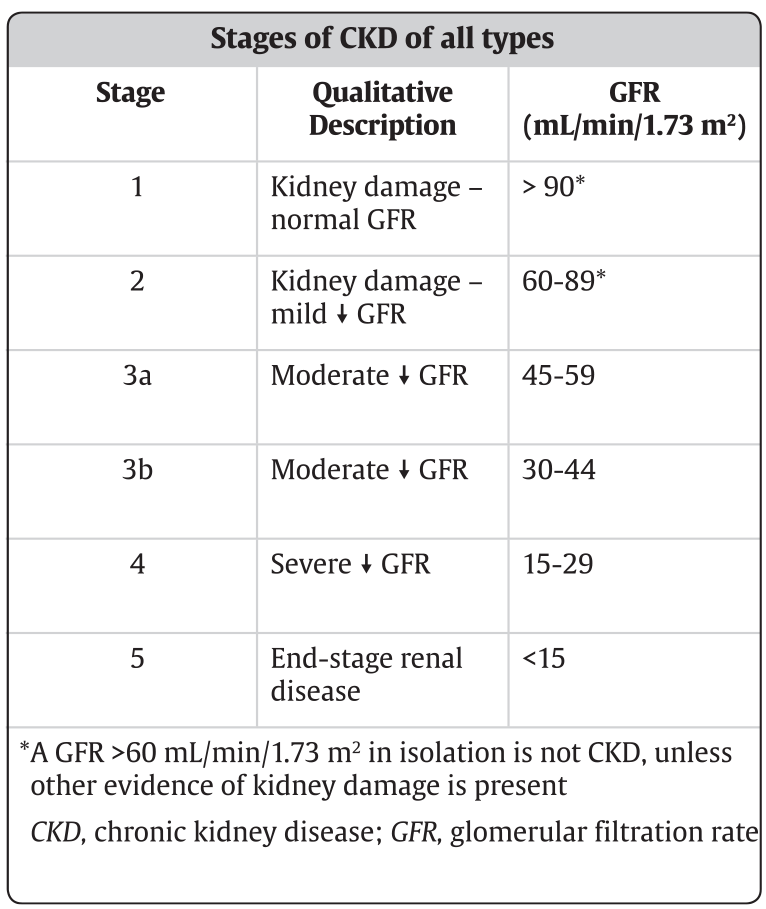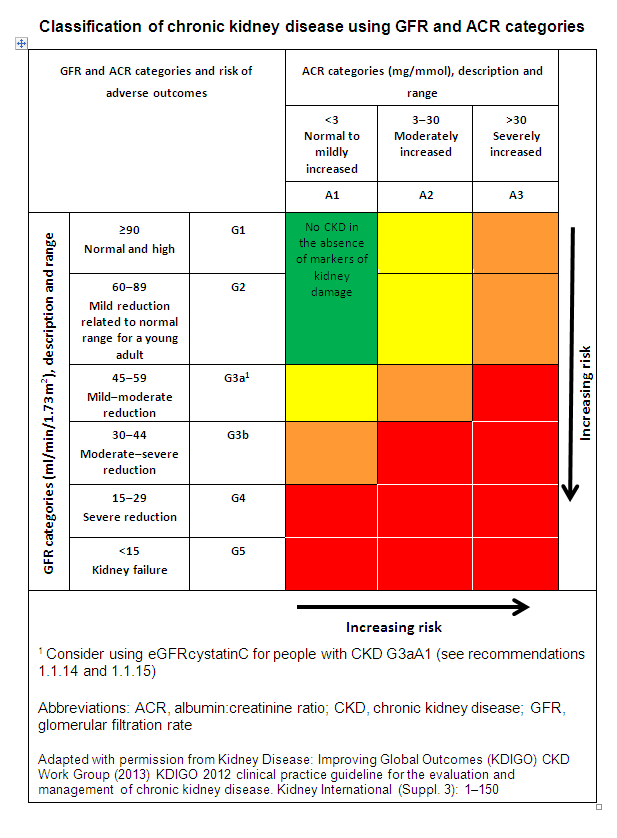How CKD is defined
Keep track of your kidney data with PKB
It is surprisingly difficult to come up with a simple was of conclusively diagnosing CKD. This is partly as it is quite hard to define.
This is partly because chronic kidney disease (CKD) is not a diagnosis. It is a syndrome (group of diseases) with many specific causes (diagnoses). So, here are two definitions.
So. How is CKD defined? This is a quite complex ‘doctors definition of CKD’
- ‘Functional CKD’ = an estimated glomerular filtration rate (eGFR; see below) of <60 mL/min – that is present for at least three months (i.e. measured at least twice), with or without evidence of kidney damage; or,
- ‘Structural CKD’ = evidence of kidney damage with or without decreased GFR – that is present for at least three months, as shown (by 1 or more of):
-
- Albuminuria (protein in urine),
- Haematuria (blood in urine, after exclusion of urological causes),
- Structural abnormalities (e.g. polycystic kidneys) on renal ultrasound)
- Pathological abnormalities (e.g. on kidney biopsy)
- Electrolyte and other abnormalities due to tubular disorders
- History of kidney transplantation.
This definition is based on the 2024 KDIGO CKD guideline (Stevens, 2024).
Stages of CKD/GFR
CKD is graded into stages 1, 2, 3A, 3B, 4 and 5 – from minor to severe kidney disease.

Who needs to be referred to a nephrologist?
If your GFR falls below 60 ml/min (Stage 3A CKD), your GP should discuss you with a hospital based kidney disease specialist (called a nephrologist). If your GFR is less than 30 ml/min (Stage 4 CKD) you should see a nephrologist. A GFR below 15 ml/min (Stage 5 CKD) indicates that you need to start a treatment for kidney failure (dialysis or a kidney transplant).
Urine ACR and CKD stage/GFR
To make things a bit more complicated [“great, thanks!” CKDEx Ed] the urinary ACR is combined with the CKD stage (Grade or ‘G’ 1-5) to estimate the outlook for someone with CKD.
In other words, CKD can be described in one patient as ‘CKD G4 A3’, and that has a worse outlook than for a patient with ‘CKD G2 A1’. So a higher level of albuminuria worsens the outlook as does a lower GFR. This dual classification is shown in this table.

Summary
We have described how CKD is defined. We hope it has been helpful.
Other resources
What is CKD?
What is a normal GFR?
5 stages of GFR explained
Last Reviewed on 23 April 2024
